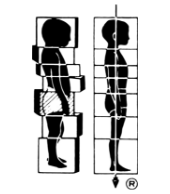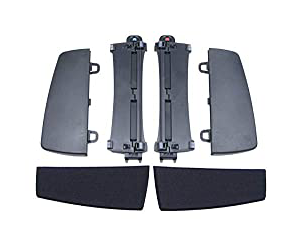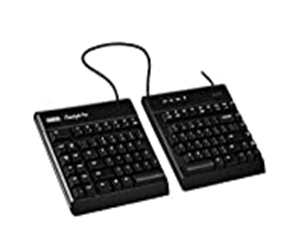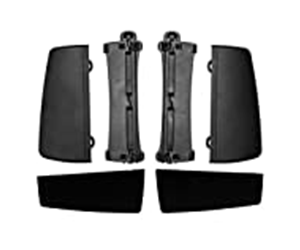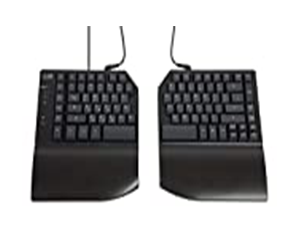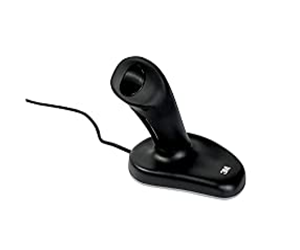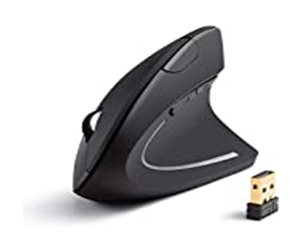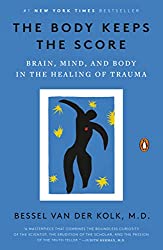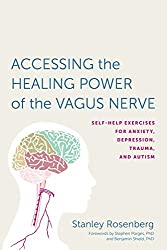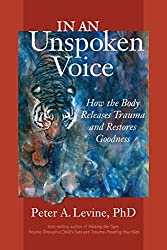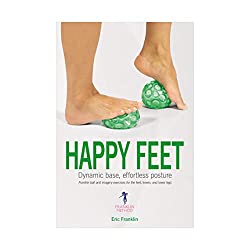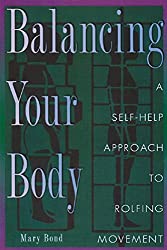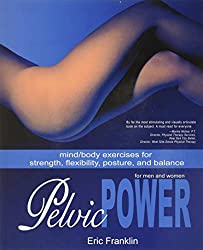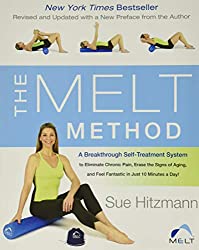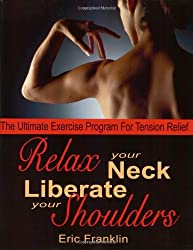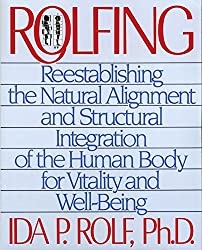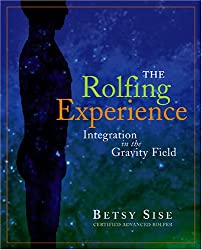STORE
Rolfing takes a holistic approach to improving your quality of life through your body. By realigning your body and re-educating your movement patterns, you can reduce or completely alleviate chronic pain issues, increase flexibility, and have more energy. Rolfing often allows clients to reduce or eliminate their dependence on expensive or time consuming maintenance programs they were on with chiropractors, massage, or just gritting their teeth through aches and pains.

RDU Rolfing
We handle your books, so you can confidently handle your business.
Ergonomic Split Keyboards
While Standing Desks have gained a lot of press lately, I generally feel that the bigger factor to spine and shoulder strain for desk workers is not the standing desk, but rather the standard keyboard. While keys placed close together made sense in the days of mechanical typewriters, I believe we have reached a point in the evolution of technology where we should be adapting the interfaces to ourselves rather than adapting ourselves to the interfaces. I have mapped out some of the affects on torso and the shoulder girdle in this blog post I wrote back in 2014.
If you are a hunt-and-peck typer these sorts of keyboards may be too big a transition for you. But if you are a touch typer and spend a decent amount of time typing in your daily life, the benefits of making the change to a split keyboard can be huge.
Kinesis Bluetooth Freestyle2 Ergonomic
AWARD-WINNING SPLIT DESIGN: Unlike fixed ergonomic keyboards, the Freestyle2 allows you to rotate and separate the key modules up to 20" to achieve natural hand, wrist and forearm positions for your specific body type and preferences.
Buying Options
KINESIS VIP3 Tenting Accessory
VIP3 attaches easily to the base of the Freestyle2 Keyboard allowing quick and reproducible tent settings of 5, 10 and 15 degrees.
Buying Options
KINESIS USB-A Freestyle Pro Quiet Ergonomic
AWARD-WINNING SPLIT DESIGN: Advanced ergonomics for all body types and preferences via adjustable split, splay, and tent (tenting accessories sold separately). New cable storage compartment supports up to 20" of separation when you need it.
Buying Options
KINESIS VIP3 Pro Tenting Accessory
REDUCE FOREARM STRAIN FOR MAXIMUM ERGONOMICS: Conventional flat keyboards force you type with your palms facing down.
Buying Options
CORE MECHANICS Split Mechanical Keyboard
VERSATILE SPLIT DESIGN: Split keyboard design offering precise set up depending on your shoulder width. 48 inch reinforced nylon braided connection cable included.
Buying Options
I've found it takes some folks a bit of time to adjust to the new positioning but once you do, typically a spread keyboard positioning allows for a much more open set in the shoulders and reduced neck strain. And for me personally, I find it easier to find flow in writing and composition and I actually feel like my writing comes out better in this open position.
For a number of years now, the Kinesis Freestyle2 keyboard with a 20" separation cord (don't bother with the 9") has been my go-to keyboard. It comes in both a PC and MAC version and can also be outfitted with a tilt kit which allows you to angle the keyboard up from flat on the desktop, allowing for even greater reduction in strain.
As the technology continues to advance, I try to make a point of testing new options as they arise. As such, I am currently, during this quarantine, looking into two new options. If you decide to try one of the options below and want to give me your thoughts about them, I'd be more than happy to get more feedback. The Kinesis Freestyle Pro which claims a better keyboard action and reduced effort to type. It also can be paired with it's own specialized tilt kit. And the Core Mechanics split keyboard which claims better action and boasts a 48" separation cord.
RDU Rolfing
We handle your books, so you can confidently handle your business.
Depending on the type of work you do, mousing may feature prominently in your day. The positioning of a standard flat mouse puts the forearm in a rather extreme range of rotation and over time can cause to a longer chain of the upper arm and shoulder rolling in as well. Using a vertical mouse set on a pad slightly outside your shoulder width will help to allow for space in the shoulder girdle through your day and ultimately help to evoke a more neutral shoulder rotation and more access to upright posturing. I especially recommend considering getting a vertical mouse if you are typically using the touchpad and the center of your laptop for mousing.
The Evoluent Vertical Mouse is probably the first vertical mouse I recall using and has continued to be a mainstay of my recommendations. It provides a nice neutral grip size and wrist orientation and allows for adapting the mouse sensitivity on the fly, which is a great tool to have when you're getting used to a new hand position. It's a good size as well for the majority of hands I encounter and a particular bonus, it comes in left and right handed styles. You can find it in wireless and some variations with extra bells and whistles but I tend to prefer wired simply to avoid replacing batteries and such. In general, this is the first mouse I'll hand people to try out using and it's where I recommend starting if you're considering a vertical mouse.
The 3M Vertical Mouse is the mouse I personally use at my office and at home. The 3M Vertical Mouse resembles more of a joystick but it simply allows you to hold the shape like a handle and move the entire apparatus around your desk. For me, this mouse is what has best fit the sizing of my hands, and the handle shape allows for a relaxed fit and ease of use that makes it the best fit for my day where I am shifting back and forth from mouse to keyboard to other work rapidly. The 3M Vertical Mouse also features a thumb-operated left and right click rocker button at the top which I find can be a little clumsy for things like drawing programs or drag and drop but which works great for me for single click operations like web browsing. If you have bigger hands, this tends to be where I recommend starting.
3M Wired Ergonomic Optical Mouse
The 3M Ergonomic Mouse has earned an Ease-of-Use Commendation from the Arthritis Foundation for its patented, vertical grip design that keeps your hand and wrist at a neutral angle, while the mouse works as a regular optical mouse
Anker 2.4G Wireless Vertical Ergonomic
Scientific ergonomic design encourages healthy neutral "handshake" wrist and arm positions for smoother movement and less overall strain.
The Anker series of vertical mice is my starter recommendation for folks with smaller hands or for whom a fully vertical hand position might be uncomfortable. It features something closer to a 50-60 degree angle instead of a near-90 degree angle to the desktop and conforms nicely to medium-smaller hands for a relaxed position and a little more space to rest the hand across. It's also a particularly compact feeling mouse which makes it nicer for travelling situations and the like.
The Body Keeps the Score
Trauma is a fact of life. Veterans and their families deal with the painful aftermath of combat; one in five Americans has been molested; one in four grew up with alcoholics; one in three couples have engaged in physical violence. Dr. Bessel van der Kolk, one of the world’s foremost experts on trauma, has spent over three decades working with survivors.
Accessing the Healing Power of the Vagus Nerve
This practical guide to understanding the cranial nerves as the key to our psychological and physical well-being builds on Stephen Porges’s Polyvagal Theory—one of the most important recent developments in human neurobiology.
In an Unspoken Voice: How the Body Releases
In this culmination of his life’s work, Peter A. Levine draws on his broad experience as a clinician, a student of comparative brain research, a stress scientist and a keen observer of the naturalistic animal world to explain the nature and transformation of trauma in the body, brain and psyche.
Waking the Tiger: Healing Trauma
Waking the Tiger offers a new and hopeful vision of trauma. It views the human animal as a unique being, endowed with an instinctual capacity.
Self Help Movement Books
Happy Feet: Dynamic Base, Effortless Posture
Happy Feet: Dynamic Base, Effortless Posture focuses on using the Franklin textured balls for exercising the feet. Exercises help promote balance, posture and tension relief.
Balancing Your Body: A Self-Help Approach
Going beyond good posture and movement efficiency, Mary Bond presents a unique self-help program of body transformation. Much of what we experience as physical tension or stress is the result of an imbalanced body.
Pelvic Power: Mind/Body Exercises for Strength
Combining scientific principles with movement and imagery exercises that are both effective and fun, this book demonstrates how to create a stronger body by toning the pelvic floor.
The MELT Method: A Breakthrough
Now available in paperback, this New York Times bestseller features a new foreword by the author, fully updated images throughout the text, and the latest scientific data that supports the effectiveness of the program.
Relax Your Neck, Liberate Your Shoulders
A foolproof guide to releasing shoulder and neck tension, this book shows how imagery and touch can be used to eliminate stiffness and pain. It provides simple and effective exercises that can be done at home, at work, or on the road.
Balancing Your Body: A Self-Help Approach
Going beyond good posture and movement efficiency, Mary Bond presents a unique self-help program of body transformation. Much of what we experience as physical tension or stress is the result of an imbalanced body.
Rolfing: Reestablishing the Natural Alignment
This seminal work made its debut in 1977, and it has since remained the most important reference for Rolfers around the world. In this new edition, the late Dr. Rolf illustrates her theory and practice of Structural Integration, which brings the body into alignment and balance by manipulation of the connective tissue.
The Rolfing Experience: Integration
Ida Rolf, a chemical engineer, mathematician and atomic physicist, pioneered a radical view of human physiology and growth that has influenced many scientific fields.
